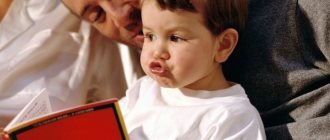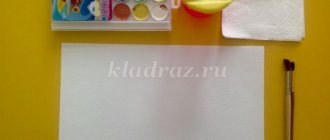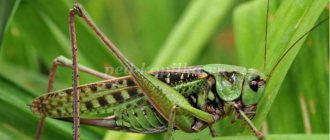Summary of educational activities in the preparatory speech therapy group on the topic “Autumn in the forest”
MADOU "Kindergarten No. 20 "Rodnichok" of a combined type", Moscow region, Shakhovskaya village
Teacher speech therapist
Link to the article, when indicated in the bibliography (according to GOST R 7.0.5–2008):
Kromskaya A.I. Summary of OOD in the preparatory speech therapy group on the topic “Autumn in the Forest” // Sovushka. 2020. No. 2. URL: https://kssovushka.ru/e-sovushka.2016.n2-a/VP16030065.html (access date: 10.10.2020).
APPENDIX: Presentation for the OOD notes in the preparatory speech therapy group on the topic “Autumn in the forest”
Integration of educational areas: correctional work + cognition + socialization + health
correctional work
- enrich children's vocabulary with polysemantic words;
- practice forming relative adjectives;
- teach agreement between adjective and noun in indirect cases;
- improve skills in selecting and using antonyms, adverbs and adjectives;
- exercise the ability to conduct sound and sound-letter analysis and synthesis of words;
- develop auditory perception and attention.
cognition
- expand ideas about changes in nature in autumn (trees).
with socialization
- develop the ability to act in a team;
- develop the ability to communicate politely with others;
- consolidate the ability to coordinate your actions with the instructions of the presenter.
health
- removal of static tension;
- prevention of eye fatigue.
Developmental environment: computer, projector, screen, presentation, pointer, audio recording of forest sounds, trays with sticks and cones, ball, paper leaves, pictures with images of leaves, cash registers with letters. Preliminary work: excursion with children to the park, reading poems about autumn, trees, guessing riddles, drawing trees, looking at paintings about autumn, classes on learning sounds and the letter C, updating knowledge on the topic “Autumn”. Audience: children 6-7 years old.
Literature (sources):
- Filicheva T.B., Tumanova T.V. Correction of speech disorders, 2009;
- Osmanova G.A. Game speech therapy massage and self-massage in the correction of speech disorders, 2013;
- https://nsportal.ru/detskiy-sad/zdorovyy-obraz-zhizni/2014/02/03/kartoteka-zritelnoy-gimnastiki-v-stikhakh
Educational activities. 1.Organizational moment. Children are included in the group. — Children, we have guests today. Let's say hello to them (Hello!). Now let’s repeat in unison:
The guys gathered in a circle, you are my friend and I am your friend. Let's hold hands together and smile at each other.
- GOOD MORNING!!!
2. Announcing the topic of the lesson. - Guys, what time of year is it? (autumn). After what time of year did autumn come? (after summer). What time of year will come after autumn? (winter). Name the signs of autumn (It has become cold. Leaves are falling from the trees...). -I want to invite you today for a walk in the autumn forest. Do you want to go there? (yes) It's very easy to do. We must say the magic words - and we will find ourselves in the forest: Clap, stomp, turn around - and we will find ourselves in the forest! (perform actions).
Turn on the projector!!! (slide 1)
3. Agreement between adjective and noun in indirect cases. A) - Here we are in the forest (the children, together with the speech therapist, approach the tables). Let's go. Sit comfortably, straighten your backs, place your legs straight, put your hands on the table (children sit at tables). - Look, guys, what kind of autumn has come to the forest - early, golden or late? (children's answers). Why do you think so? (children's answers). - Now I will say sentences, and you end them with the words “golden autumn.” (what?) ...golden autumn has come to the forest. Just recently there was no (what?) in the forest... We are happy (what?)... We love (what?) very much... We admire (what?)... We were talking now (about what?)... B) - Tell me, guys, what do trees grow in our forest? (fir trees, birches...) If both deciduous and coniferous trees grow in a forest, what is the name of such a forest? (mixed).
4. Formation of relative adjectives. A) - Let's look at the first clearing (slide 2). How many leaves and fruits are there on earth! What is this phenomenon called when leaves fall? (leaf fall). Why is this happening? (the tree gets rid of leaves in which harmful substances have accumulated; so that snow does not settle on the leaves in winter and the branches do not break under their weight). - If you now correctly name which trees these branches are from, you will see the trees themselves. Can you guess what tree this branch is from? (this branch is from a birch tree, which means it is birch... oak... rowan... willow) - Think about which of these trees they say “hundred-year-old”? (oak) Why do they say that? (children's answers)…. white-trunked? (birch)…. small-leaved? (Rowan)…. moisture-loving? (willow). B) - And here is the next clearing (slide 3) . And there are many twigs on the ground here. - Name the branches correctly and you will see trees. What tree is this branch from? (this branch is from an aspen tree, which means it is aspen... pine... maple... linden) - I’ll now name the trees, and you listen carefully and tell me which tree I missed? (the speech therapist names 3 trees from the picture at random, children name the missing tree).
5. Development of auditory perception and attention (slide 4). — If you listen, you can hear many sounds in the forest. Listen (listening to a piece of music). -What sounds did you hear? (I heard birds singing. I heard the wind...)
6. Clarification of articulation and sound characteristics S. - We heard the wind whistling in the forest. And now we will sing our song of the wind. Sit up straight, straighten your back, inhale through your nose, pause, exhale through your mouth, don’t raise your shoulders (SSSSSSSS). -What sound did you name now? (c) (slide 5) On the screen - articulation of the sound “C”. - We have already become acquainted with this autumn sound in class, and now let’s remember what it is? (It is consonant, unvoiced, can be hard and soft)
7. Game “Lay out the letter.” - Let us remember the rule: “We pronounce and hear sounds, but we see and write letters.” The wind threw branches from the trees onto your tables. Make the letter C out of them (children complete the task). Place the sprigs on the trays.
8. Selection of words with the sound “C” at the beginning and end of the word (slide 6). On the screen is a slide “Sun behind the clouds.” - Guys, look, clouds have hung over our forest and almost covered the sun. Let's clear the clouds! To do this you need to complete the task correctly. - The clouds are not simple - there is a picture on each one. Let's name them. The names of which pictures begin with the sound C (sleigh, owl, bag); end with the sound C (pineapple, bus). — Why didn’t you name the picture “banana”? (because there is no S sound in this word). You did a great job with this task, and the sun shone in the sky again! (slide 7)
Turning off the projector!!!
- Now let our eyes rest. Follow my hand.
Visual gymnastics “Autumn”. Autumn spread paint along the edges, quietly brushed along the leaves. The hazel trees turned yellow and the maples glowed, The aspens are purple, only the oak is green. Autumn consoles: do not regret summer, Look - autumn is dressed in gold!
Circular movements of the eyes: left - up - right - down - right - up - left - down Look left - right. Look up and down. Close your eyes, then blink.
9. D/game “Say the opposite” (with a ball). - I suggest you go out into the clearing and play (the children go out onto the carpet). - We will say the words “on the contrary.” Poplar grows quickly, and linden grows slowly. Spruce likes it when it's dry, and willow likes it when it's damp. The pine branches point upward, while the willow branches point downward. Oak has deep roots, while birch has shallow roots. The oak tree has a thick trunk, while the rowan tree has a thin trunk. The pine tree has a dark trunk, and the birch tree has a light trunk. Oak has light acorns, while spruce has heavy cones. Spruce has short needles, while pine has long needles. Aspen has wide leaves, while willow has narrow leaves. — Guys, you did a great job with this task.
Physical education We are autumn leaves, we sat on the branches (the children are sitting) The wind blew and we flew. We flew, we flew (they run in a circle) and sat quietly on the ground. (sat down) The wind came again and lifted all the leaves. (they stood up) They spun around, flew and sat down on the ground again. (they circle around and sit calmly on the carpet).
Children go to the tables.
10. Work on polysemantic words. — Guys, the word “leaf” has different meanings. A leaf grows on a tree, what else could it be? (leaf in the book). - Cones are also different. Tell us what kind (fir cones, pine cones, cones on the head).
- Let's play with fir cones. Self-massage with fir cones “Pine Cones” The bear walked through the forest, (Fingers walk on the table) He found a lot of cones, (Fist-rib-palm) He found a lot of cones, (Fist-rib-palm) He brought us to kindergarten. (Fist-edge-palm) One, two, three, four, five! (Bend the fingers on both hands) Let's play with the bump! (They take the cones) We will play with the cone, (Rolling the cone between the palms) Roll between the arms! Let's take our right hand (Strongly squeeze the lump in our right hand) And squeeze it harder! We quickly unclench our hand, (Roll the bump between our fingers) Roll it between our fingers. Let's take the left hand in our hand (Strongly squeeze the pine cone in our left hand) And squeeze it even harder! We quickly unclench our hand, (Roll the bump between our fingers) Roll it between our fingers. We have finished skating, (We remove the cone to the edge of the table) Let's continue!
11. Working with letter registers. — Not all forest inhabitants are still sleeping. Guess who flew to the clearing: Those with whom I was buzzing next to, Remember - I have a sting and a stripe on my belly, Because I... (wasp) (slide
Turn on the projector!!!
— Move the letter registers towards you. Let's put out the word "wasp". What is the first letter in the word "wasp"? Second? What is the last letter in this word? Let's read the resulting word (wasp). How many letters does it have? (3). How many vowels are there? (2) Name them. How many consonants are there? (1). Name them. — Remove the first letter O. What happened? (SA). Add one letter to make the word “SAM”. Let's read it. Put the letters in the tills.
12. Summary of the lesson. -Guys, it’s time to return home (slide 9). Let's remember where we walked. I will show branches of different trees, and you will form the desired word and insert it into the poem (the speech therapist shows pictures with different leaves):
We rested in the (birch) forest, fell into a ditch in the (oak) forest, sat on a pine cone in the (fir) forest, ate berries in the (rowan) forest. It was beautiful in the (aspen) forest. In general, we spent the whole day happily!
- Now come out here (the children go to the carpet). Tell me what you liked about our walk (children's answers). Look what a beautiful bouquet of leaves autumn has given us! She began to paint the leaves in different colors, but did not have time to finish the work. Let's help her. You will paint the other side of the leaves at home with multi-colored paints (the speech therapist holds a bouquet of paper leaves in the hands; each child receives a leaf). - And now let’s say the magic words: Goodbye, dear forest, let’s not forget the miracles. Turn around quickly and you’ll find yourself back in the group!
Turning off the projector!!!
- Well, here we are again in our garden.






